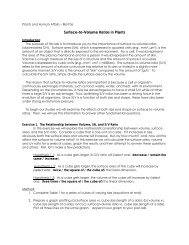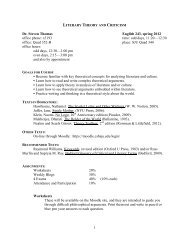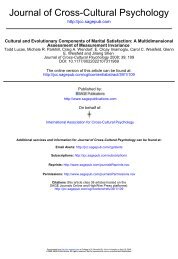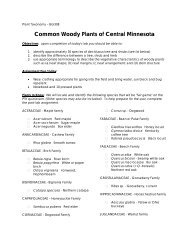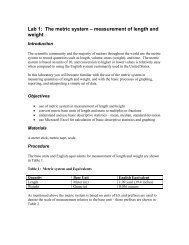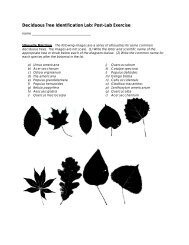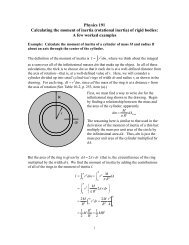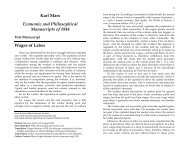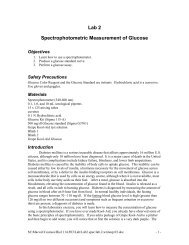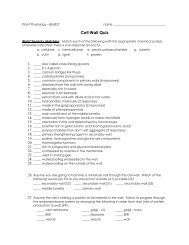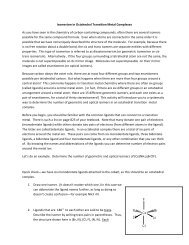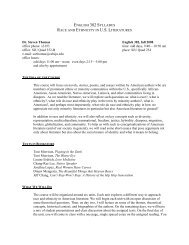PHYSICS 200 CLASS 1 SPRING 2004 ASSIGNMENT - Employees ...
PHYSICS 200 CLASS 1 SPRING 2004 ASSIGNMENT - Employees ...
PHYSICS 200 CLASS 1 SPRING 2004 ASSIGNMENT - Employees ...
You also want an ePaper? Increase the reach of your titles
YUMPU automatically turns print PDFs into web optimized ePapers that Google loves.
<strong>PHYSICS</strong> <strong>200</strong> <strong>CLASS</strong> 2 <strong>SPRING</strong> <strong>200</strong>4(14 January <strong>200</strong>4)<strong>ASSIGNMENT</strong>: Text, Chapter 23, sections 1–6CONCEPTS: 1. Induced electric charge; electric dipoles.2. Electric Field -- Be sure you understand why we introduce this idea.Note that we can equally well speak of a gravitational field—this ideamay seem a little more intuitively reasonable at first.3. Lines of force. This concept was introduced by Michael Faraday inthe 19th century, and is a marvelous device for "visualizing" electricfields.4. binomial theorem (calculation on page 526) – it is an important andwidely used tool for doing approximations4. Concept of an integral as a device to “add up” infinitesimal pointcharges to find the field of an extended object.On-line tutorials: Chapter 23, Problems 13, 21, 23, 31, 39RECOMMENDED QUESTIONS AND PROBLEMS: Concentrate on the problemsfor sections 3–5 at the end of Chapter 23-----------------------------------------------------------------TURN IN: Chapter 23, Question G-23; Problems 10, 11, 13*; Extra Credit, Problem 16Please note: Questions and problems from the (green) Problem Supplement book have a“G” in front of them, as in Question G-23 above.NOTES AND ANNOUNCEMENTS1. Remember that on-line tutorials are available for the starred problems.2. Remember to follow the guidelines in the course outline for writing up homework.3. Problem 16 is moderately challenging. In order to approach it, it helps to understandin detail how HRW’s calculation with the binomial theorem works, even though thattheorem is not absolutely necessary for this problem. Note, for example, that thebook skips several steps between Equations 23-5 and 23-6. The book does notexpect that you will think those steps are obvious; it does expect you to workthrough the calculation on your own.I have put a few notes on the binomial theorem on the other side of this page.



